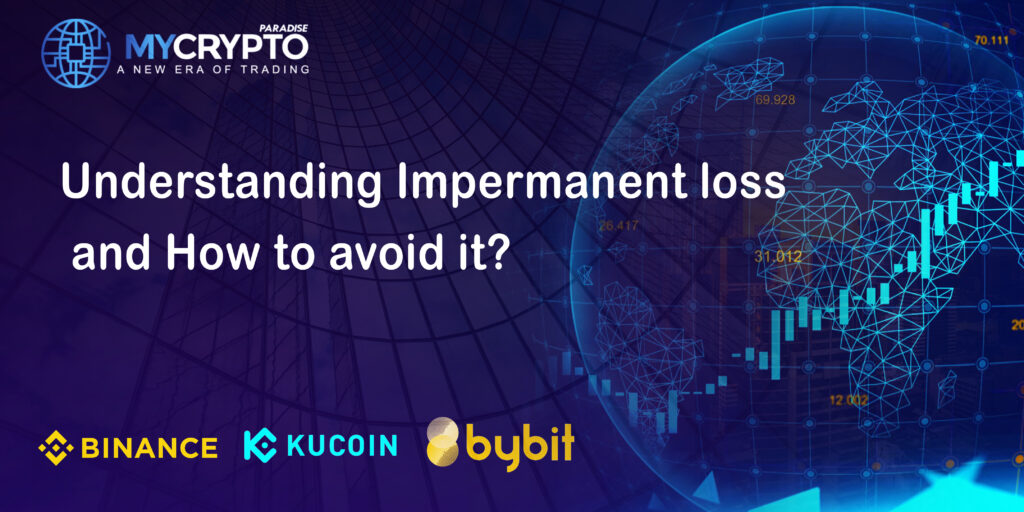As the world of cryptocurrency continues to grow, more and more investors are looking for ways to profit from this exciting market. One strategy that has gained popularity is liquidity provision, which involves providing liquidity in the form of tokens to an Automated Market Maker (AMM) platform. However, while liquidity provision can be a lucrative strategy, it also comes with its own unique risks, one of which is impermanent loss. In this blog post, we will explore what impermanent loss is, how it works, and most importantly, how to avoid it.
What is Impermanent Loss?
Impermanent loss is a type of financial loss that occurs when a liquidity provider (LP) provides liquidity to an AMM platform. This loss is caused by the fluctuation in the value of the assets being traded. Specifically, when the price of an asset in the trading pair provided by the Liquidity Provider changes, the value of the LP’s investment changes as well. This is because the Liquidity Provider is essentially providing both assets in the trading pair and is therefore exposed to the price risk of both assets.
The term “impermanent” is used to describe this type of loss because it is only realized when the Liquidity Provider withdraws their liquidity from the AMM platform. At that point, the LP’s investment is worth less than it would have been if they had simply held onto their assets.
How Impermanent Loss Works
To better understand how impermanent loss works, let’s consider a hypothetical example. Suppose a LP provides liquidity to an AMM platform that trades ETH and USDT. The Liquidity Provider contributes 1 ETH and $1,000 worth of USDT to the platform. At the time the Liquidity Provider gives liquidity, the price of ETH is $2,000, and the price of USDT is $1.00.
Now, let’s say that the price of ETH rises to $2,500, while the price of USDT remains the same. As a result, the LP’s investment is now worth $3,500, which represents a 16.7% increase from their initial investment. However, because the Liquidity Provider Is providing liquidity to the platform, they are now required to provide more ETH to maintain the same proportion of the trading pair. In this case, the Liquidity Provider would need to add an additional 0.2 ETH to their liquidity pool.
Conversely, if the price of ETH were to drop to $1,500, the LP’s investment would now be worth $2,500, which represents a 16.7% decrease from their initial investment. In this scenario, the LP would need to remove 0.2 ETH from their liquidity pool to maintain the same proportion of the trading pair.
In both cases, the LP is exposed to the price risk of both ETH and USDT. If the price of either asset were to change significantly, the LP’s investment would be affected.
How to Avoid Impermanent Loss
While impermanent loss is an inherent risk of liquidity provision, there are several strategies that LPs can use to minimize its impact. The first and most important strategy is to carefully select the trading pairs that you provide liquidity for. It is important to choose trading pairs that are less volatile and have lower price correlation.
Another effective strategy is to provide liquidity to stablecoin pairs, such as USDT/USDC or DAI/USDC. Stablecoins are pegged to a stable asset, such as the US dollar, and are less volatile than other cryptocurrencies. As a result, the risk of impermanent loss is reduced.
Finally, LPs can also use impermanent loss protection tools provided by some AMM platforms. These tools use complex algorithms to mitigate impermanent loss by adjusting the LP’s exposure to each asset in the trading pair.
Conclusion
Impermanent loss is a risk that all LPs should be aware of when providing liquidity to AMM platforms. Understanding how it works and how to avoid it can help Liquidity Providers (LPs) make informed investment decisions. Although there is no way to completely eliminate the risk of impermanent loss, selecting liquidity pools with highly correlated assets and smaller trading volumes can help Liquidity Providers mitigate it. As with any investment, it is important to do your research and understand the risks before providing liquidity to a pool.
Be a member of the big boys in crypto today by joining the ParadiseFamilyVIP, there will be a personal crypto trading expert to teach you how to execute your trades on Binance, Bybit, and Kucoin exchanges. We share at least three of our best crypto trading signals per day.
Use PRO20% for your special 20% discount today as the promo expires soon. Click here to see reviews from our clients.
Join our telegram channels where we share our FREE updates and analysis on coins like BTC, ETH, and other trending altcoins. We also share our FREE secret insights, and also FREE market updates.
- My Binance Paradise – https://t.me/MCP_binance
- My KuCoin Paradise – https://t.me/MCP_KuCoin







